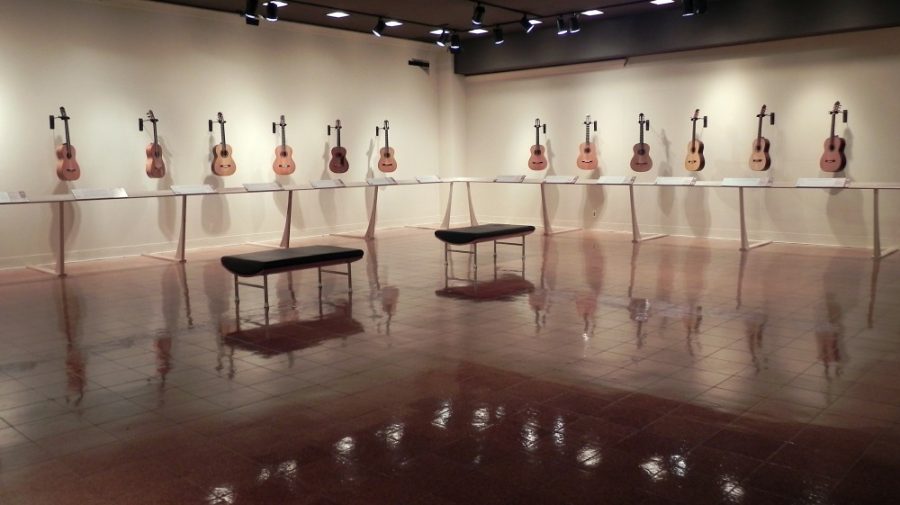Guitar fanatics rejoice: “Good Vibrations,” a UA Museum of Art exhibition, will celebrate the love for one of the world’s most popular instruments in a new way.
The exhibition opened earlier this month, and is all about appreciating the fine craft and colorful history of guitar making. The guitar maker has the important job of choosing what aspect of the guitar body to change to create “good vibrations.”
At the museum, guitars in the exhibit are arranged so that they pop out of the walls.
“When you look around, they all look the same (at first),” said head museum curator Charles Guerin. But by approaching them more closely and seeing their intricacies, it becomes apparent they are all different, he said.
Musicians may think it is sacrilege to nail these instruments to a wall without playing them, but Guerin devised a way for people to hear how unique each guitar sounds. Students from the UA guitar program joined with museum curators to play and record the sounds of the instruments on the wall and place them onto a music playlist.
By using their own smartphones, mp3 players and iPads, or renting one from the museum, museum-goers are able to scan the barcode located on each guitar’s label. Barcode scans provide supplemental information as well as a recording of what the guitar sounds like when played. This is the first time the museum will use this technology and the exhibit will be a guinea pig, Guerin said.
As more information about art and history is being put onto the Internet, the museum is merely following suit.
According to Guerin, making guitars from scratch is a craft — but guitar making doesn’t get much attention because guitars are best known for their purpose — as opposed to other forms of artwork that hang on a wall.
Guerin was able to talk with the local makers about different guitar building techniques, and he explained that subtle changes in the making of these guitars have a corresponding impact on how the guitars respond and sound. For example, adjusting the size of the bridges can change the sound and tone quality in the instrument.
Thanks to loans from personal collections such as that of UA professor James Greenberg, 19th and 20th-century guitars make up a lot of the exhibition. “Tucson is home to a deep and rich guitar making community. Specializing in both acoustic and electric guitars, 10 of these local makers will contribute to the exhibition,” according to a release about the exhibit. “Good Vibrations” also holds the oldest modern guitar documented in history, made in 1590.
The “frying pan,” which resembles its nickname, is the oldest electric string guitar. “The frying pan” begins the tour through the gallery of electric guitars. At the exhibit, visitors can experience all kinds of guitars, whether acoustic or electric, classical or contemporary.
The events for the exhibit kick off this Friday with an open reception. On Nov. 3, UAMA will host a panel discussion for electric guitars as well. On Dec. 7, the UAMA will welcome Greenberg and local classical guitar makers to speak. Students in the School of Music’s guitar program will complement the evening by playing various guitars featured in the exhibit. Guerin also plans to hold Flamenco guitar concerts in early January as the exhibit closes.









